Rewilding returns lost species to strengthen ecosystems
Restoring the missing species can improve forest health, slow climate change and more
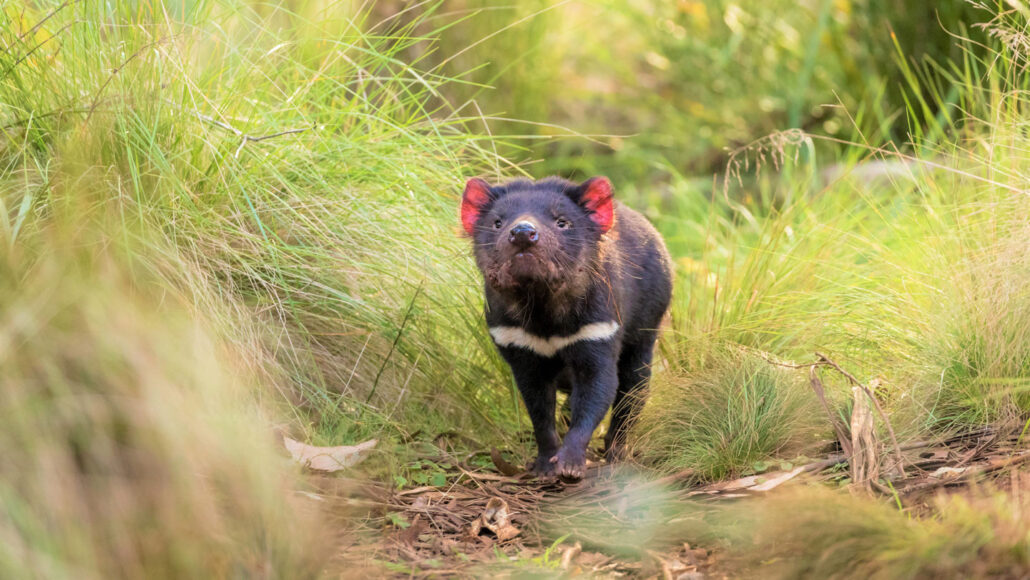
A Tasmanian devil explores its new home on mainland Australia. It was one of more than two dozen devils released as part of a rewilding project.
Aussie Ark
In March 2020, a group of conservationists fenced in a large area of eucalyptus forest in the hills of southeastern Australia. They trapped and removed non-native foxes and feral cats. Then they trucked in and unloaded 28 PVC pipes. Each was wide and capped at both ends with a disk full of holes. They laid the pipes side-by-side on the ground beneath towering eucalyptus trees, then held their collective breath as they opened them.
A mottled nose poked out from one tube, followed by the rest of a pointy black head. Whiskers twitched. Then a Tasmanian devil — the world’s largest carnivorous marsupial — eased out onto the forest floor. It was soon followed by the others — the first devils in the wilds of mainland Australia in 3,000 years.
Reintroduction of Tasmanian devils to the Australian mainland is part of an effort called rewilding. All over the world, species have been disappearing from parts of their native habitats. Often people are the cause. It might be due to hunting. Or their introduction of invasive species. Those intruders can sometimes out-compete or prey on the natives until those natives are all gone. Affected species didn’t go extinct everywhere. But they were no longer part of the complex web of life in that particular place.
More and more, scientists have begun to reintroduce animals into spaces from which they had disappeared. The idea is that this rewilding will help return the ecosystem to its original state — or something close. By reintroducing animals, people can let natural processes work on their own. Bringing back predators, for example, could restore balance to populations of their prey and the plants those prey eat. Rewilding herbivores could alter how much carbon an ecosystem stores. Restoring some animals might even slow drought and reduce the risk of fire.
“The basic idea of rewilding is to give space for nature to do its job,” says Henrique Pereira. He’s a biodiversity conservation researcher at the German Center for Integrative Biodiversity Research in Leipzig. “The idea is to step back from trying to control nature,” he says, and let nature do some work for us.
New approach to restoration
Restoring ecosystems isn’t new. For decades, scientists have been replanting forests, reseeding prairies and finding ways to help fish and other wildlife move around dams. These changes are meant to undo earlier changes created by people, such as clear-cutting of forests for timber. People also plowed prairies to clear the way for vast expanses of crops. And they created narrow channels to prevent rivers from eroding their banks. That may be good for people, buildings and our need for food. But such changes alter natural ecosystems in ways that can make them less likely to function properly.
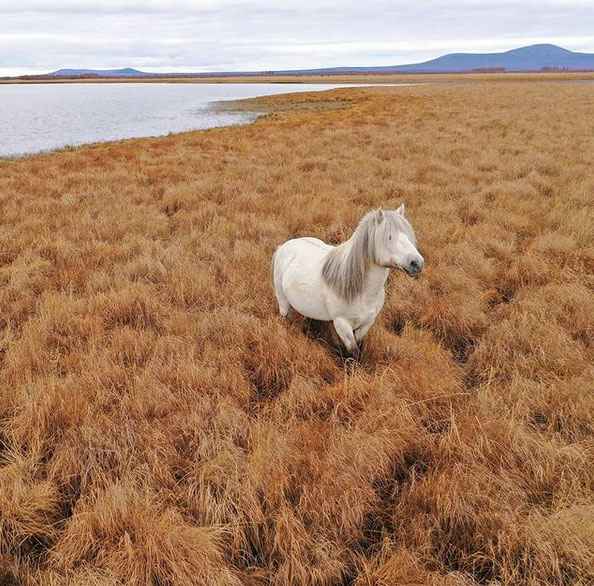
And we need ecosystems that function well. We rely on all types of services that those ecosystems provide. Plants often get the most attention here. They produce the oxygen we need to breathe. Many remove pollution from air and water. Plants also remove carbon dioxide, a greenhouse gas, from the atmosphere and store it.
In the last decade or so, though, more attention has turned to the animals in these ecosystems. Animals play important roles in their food webs. Insects pollinate flowers so that plants can reproduce. Herbivores mow down plants, keeping them from getting too abundant. Carnivores keep herbivores in check, so they don’t wipe out the plant life. A functioning ecosystem is a balancing act. All players are essential to keep things running in a healthy way.
So researchers around the world are beginning trial introductions of animals to ecosystems. These aren’t randomly selected animals. They’re animals that once lived in the area — or are similar to those that did. Most are species that went extinct locally but exist elsewhere. By returning populations to these struggling ecosystems, scientists hope to return these systems to a more natural state.
The devil’s in the details
Tasmanian devils were once an important part of the Australian ecosystem. They mainly scavenge dead animals, explains Hayley Shute. She is the life sciences manager for Aussie Ark. This organization in Tomalia, New South Wales, works to protect endangered species. And devils help protect native species by driving away feral cats and foxes. Cats and red foxes were introduced to Australia by European colonizers. Widespread populations of these animals now threaten many small mammals on the continent, such as bilbies, quolls and potoroos. These animals are found nowhere else on Earth.
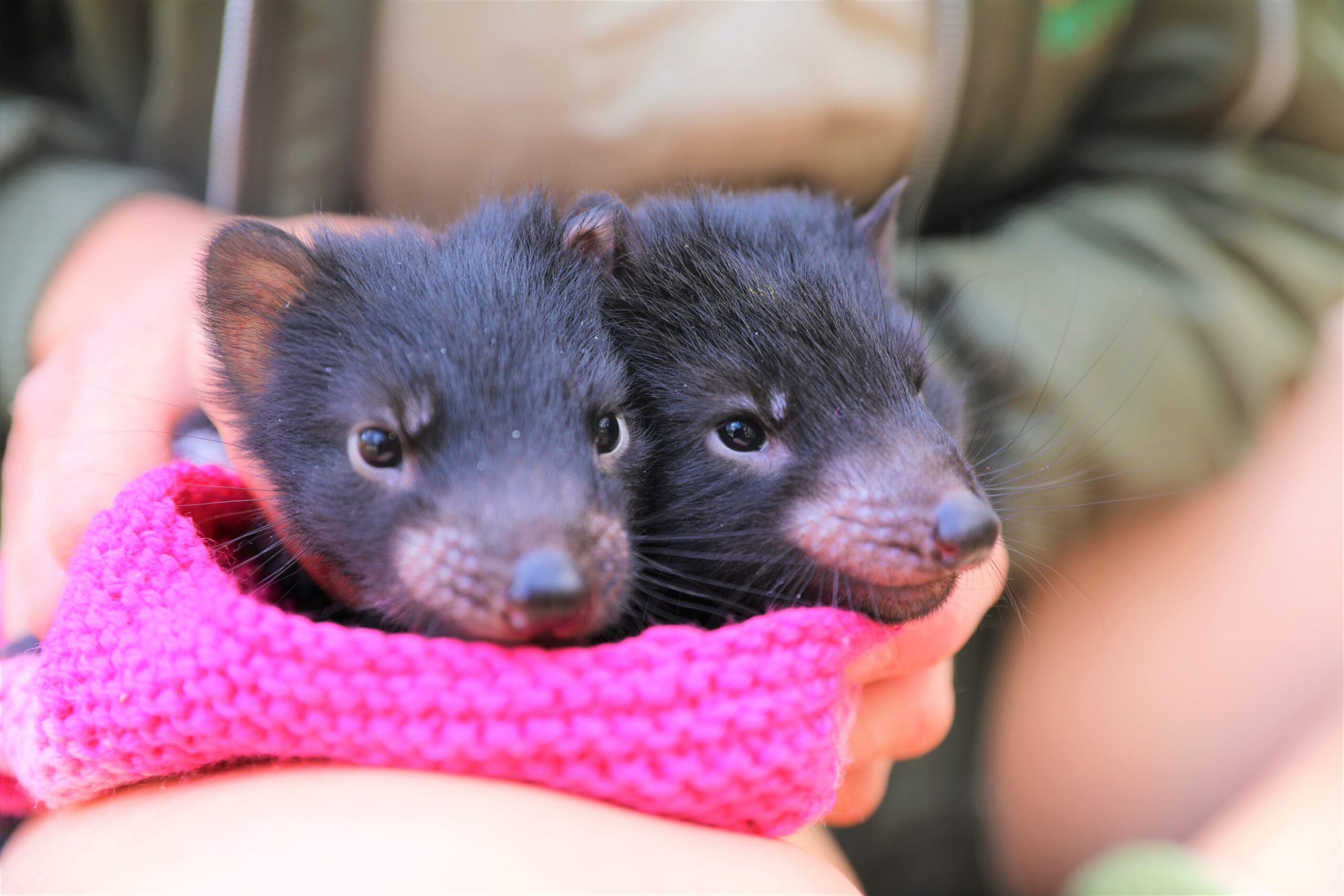
Eliminating cats and foxes can go a long way toward helping Australian wildlife, Shute says. Just one month after researchers set up the fence for the devils’ enclosure, they saw a dramatic increase in the number of rodents, she notes. That was probably because those invasive animals were kept out of the area.
Do they need devils, then? Absolutely. “The Tasmanian devil isn’t an apex predator,” Shute notes. That’s a predator at the top of the food chain. It helps control populations of other animals. Still, Shute explains, the devil “fills some of that role” by keeping invasive predators away. Aussie Ark hopes to eventually have populations of free-living devils in Australia. This would help protect smaller mammals and allow native predators, such as quolls and birds of prey, to control populations of herbivores.
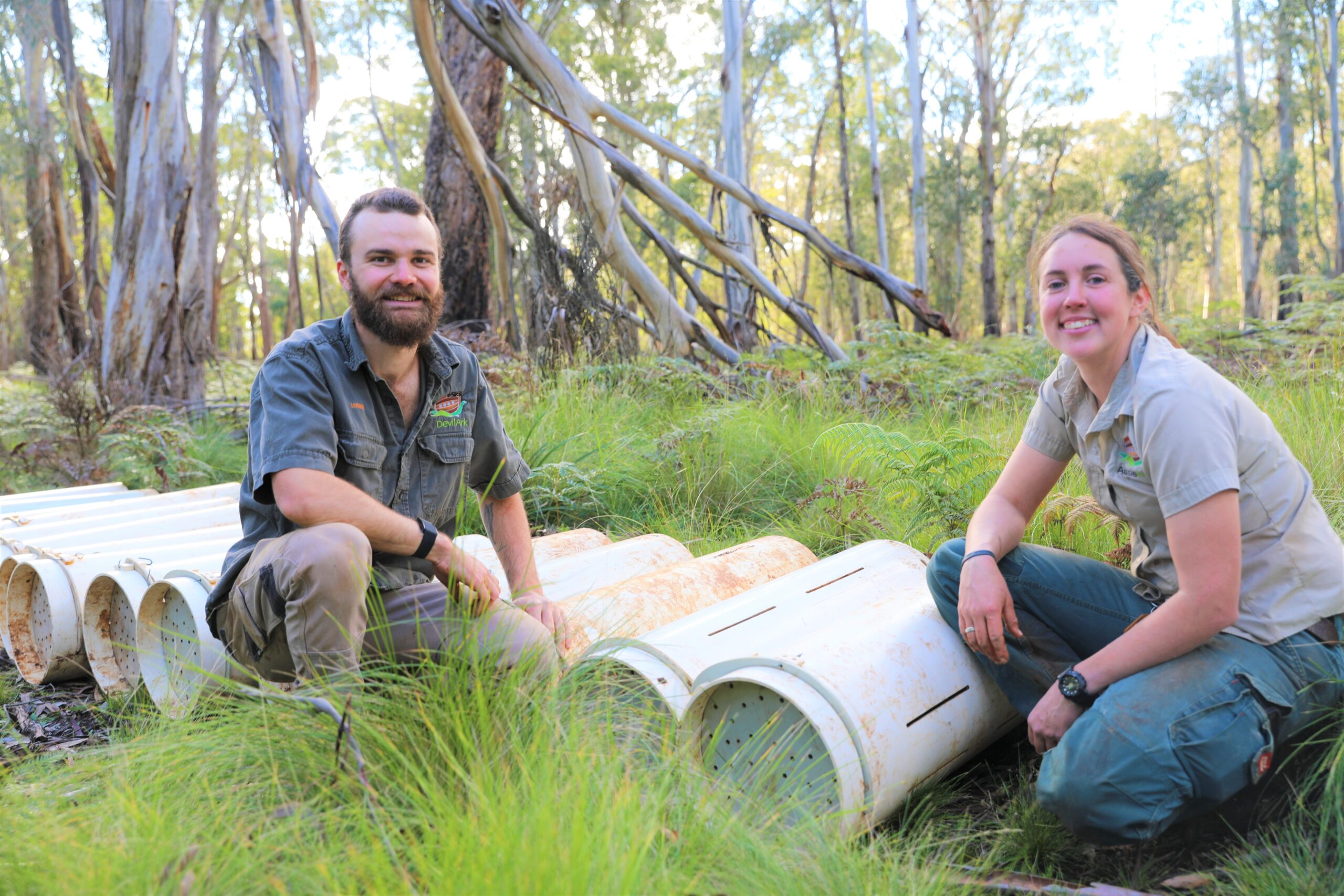
Aussie Ark is also hoping to protect wildlife “by creating insurance populations,” Shute says. These are populations of animals reared in safe places — in case something happens to the wild populations.
Their efforts show real promise. “Australia has the worst mammal extinction rate in the entire world,” Shute notes. But rewilding efforts can go a long way to making sure future generations enjoy the same wildlife people do today.
Steppe back to the past
In northern Siberia in Russia, Nikita Zimov and his team arrive at Pleistocene Park in two large trucks carrying fur goats and camels. They’re weary. It took a full month to relocate the animals from a farm near Moscow. Traveling by truck and boat, they journeyed up the Kolyma River, which empties into the Arctic Ocean about 120 kilometers (75 miles) to the north of the park.
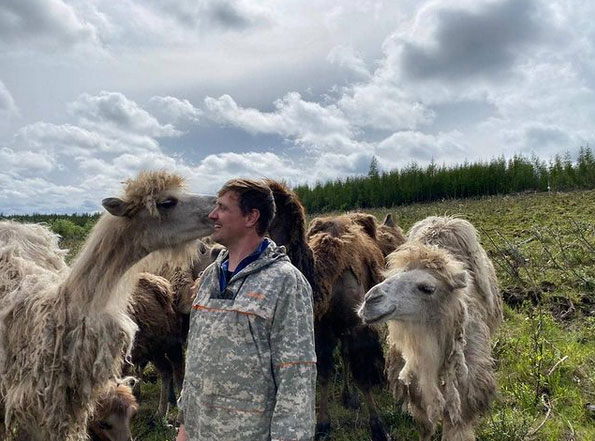
Zimov’s father, Sergey, started Pleistocene Park in 1996. It’s an experiment to see if reintroducing grazing animals to the Arctic can help restore an ecosystem that existed thousands of years ago. Called mammoth steppe, this ecosystem was mostly grasses with some shrubs and trees. Large grazers — including now-extinct mammoths —created and maintained that ecosystem. Bringing it back could help fight climate change. Or so the Zimovs hope. Their idea is that steppe will keep the ground frozen year-round. This could prevent the release of greenhouse gases from thawing soil.
The team unloads the goats, including two kids born during the trip. Then come the camels. The new arrivals join other animals at the park. Muskox, reindeer, moose, bison, yak, sheep, Yukatian horses and Kalmykian cows have arrived over the years. Many once lived in the ancient ecosystem. Others, such as cows, graze similar types of plants. Their home is a 20-square-kilometer (7.7-square-mile) enclosure within the 144-square-kilometer (55.6-square-mile) park.
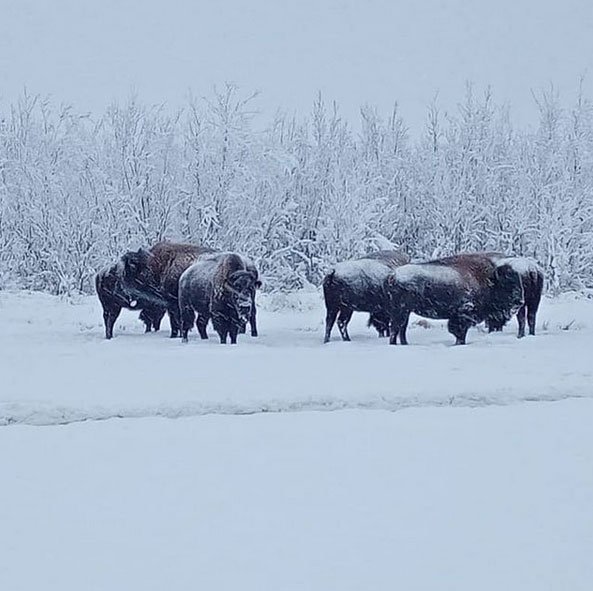
When the grand experiment began, the area was tundra. Most of the ground was permafrost, a thick layer of soil that remains frozen year-round. But the permafrost has been thawing. That releases methane into the atmosphere. This potent greenhouse gas contributes to climate change. Reintroducing grazing animals to this landscape might help prevent this. Their feet will trample snow, exposing the ground to extreme cold in winter. This will help keep permafrost frozen. As grasses begin to take over, their deep roots will store carbon underground. Grasses reflect more light and heat than existing tundra plants, which could help cool the area, even in summer.
Twenty-five years into the rewilding effort, the ecosystem is changing. Grasses are spreading across the enclosed area. That’s not all. A team of researchers confirms that those grasses are increasing the amount of carbon stored in the soil. And the soil stays colder. In winter, soil temperatures are as much as 14 degrees Celsius (25 degrees Fahrenheit) colder than soil in untrampled areas. This helps keep the permafrost frozen year-round, even though summers have been getting warmer.
But the work here is far from done. The team would eventually like to see millions of animals inhabiting millions of square kilometers of land. “The more diverse is the ecosystem, the better,” Zimov says. “We would eventually need to introduce predators,” he notes. “Without them, we will not be able to create [a] sustainable ecosystem” that functions well and helps fight climate change.
Fighting an upstream battle
Molly Alves checks in on her wards: two displaced beavers. For now, the pair is living in a fish hatchery on Tulalip Tribes land in western Washington. But the rest of the beaver family is still out in the wild. Alves and Dylan Collins load up their truck and head out to find them.
Both are wildlife biologists with the Tulalip Tribes Natural Resources Beaver Reintroduction Project. The project is using beavers to improve salmon habitat. Young salmon, called fry, need cool pools of still water. Beavers are experts at providing it by damming streams and rivers.
But beavers were hunted to near-extinction in the 1800s by people who wanted their fur for coats and hats. Since then, the animals have been making a slow comeback. However, there’s a problem. Beaver dams can cause flooding. Where this happens nears cities and other populated areas, the beavers are considered a nuisance.
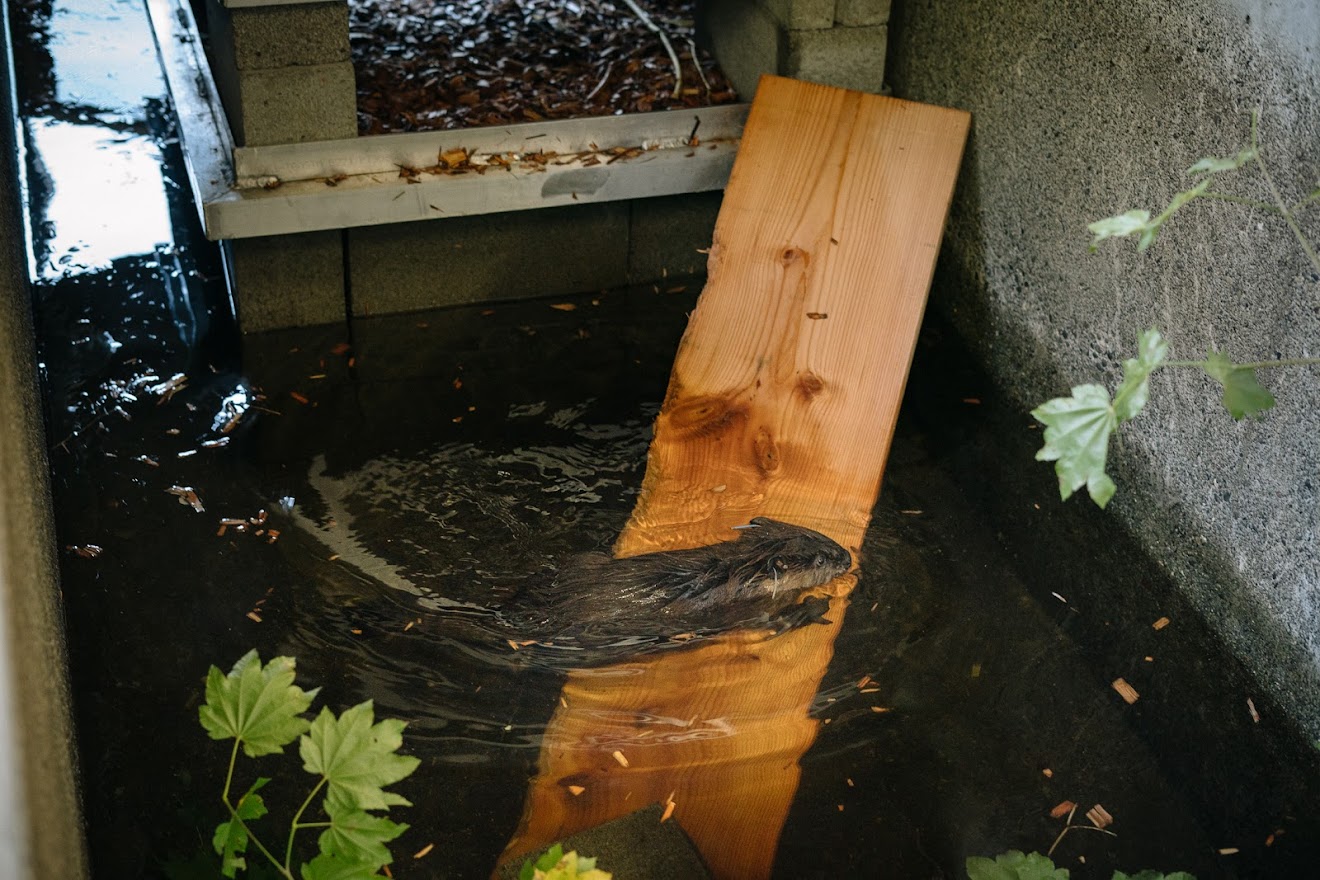
Normally, such “nuisance” beavers would be killed. But the Tulalip Tribes came up with an alternative solution: Relocate the beavers onto land within the Tulalip’s Ceded Territory. Most of these beavers are released along mountain streams northeast of Seattle in the Mount Baker Snoqualmie National Forest.
To capture the remaining members of the beaver family, Alves and Collins start by wading into a stream in the outskirts of Seattle. They carry a large, suitcase-like trap. They open it and submerge one half next to the stream bank. When a beaver steps on it, the trap will snap shut. It won’t hurt the beaver. It will just hold it until the biologists return at first light the next morning. They’ll reunite the beaver with its parents at the hatchery and head out to trap another juvenile. Three more and this family will be ready to head to its new home.
“They’re much more likely to stay where we put them if we move them as a group,” Alves says. That’s because beavers form tight-knit family groups. If the biologists don’t keep the family together, the relocated animals will go in search of the others.
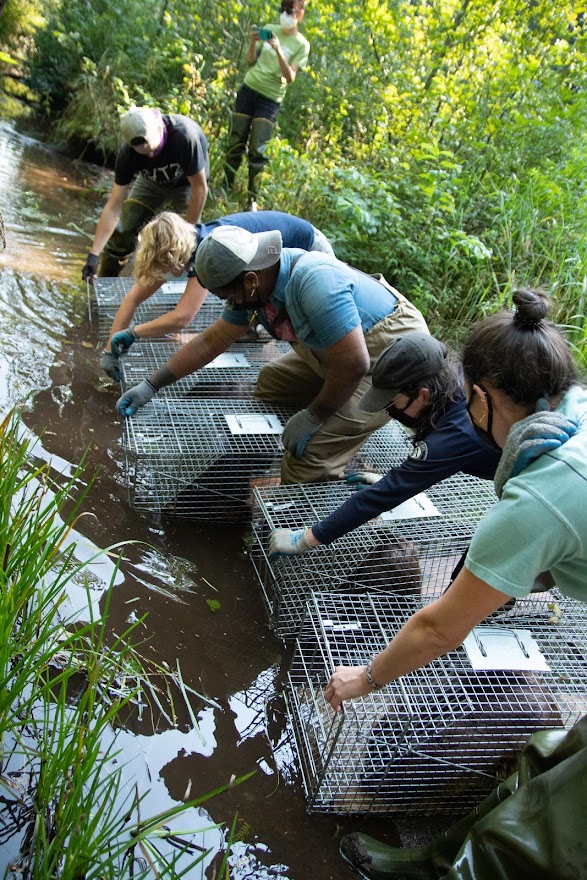
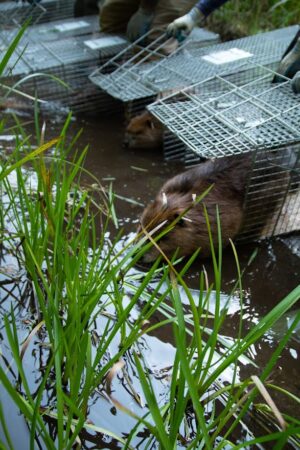
The biologists use computer models to find mountain streams that would make good beaver habitat. They visit potential locations and rate them with a “site scorecard” to determine which ones would work best. Then it’s time to bring in the beavers.
“We’re working with wild animals that are highly mobile,” Alves says. “So they don’t always stay right where we put them.” But if the beavers make it to the following spring, they’ll likely stay in the spot for good. They build dams, lodges and channels that create wetlands. Animals of all types seek refuge in that new habitat, including salmon fry. The beavers help protect salmon populations, just by doing what beavers do.
And all those wetlands supercharge the soil with water. The dams slow the flow of water downstream to Puget Sound and the Pacific Ocean. That’s not only essential for fish. It’s also critical for people at a time when heat waves and drought have become a growing problem. “Beavers store freshwater,” Alves says. They can even help suppress wildfires. Wetlands can act as a fire break, preventing fires from spreading to new areas, Alves says. And after a fire, unburned areas around the beaver ponds provide a place for other wildlife to hide and recover.
The trick for all of these rewilding efforts is helping people understand why we need the animals on the land. They’re part of an ecosystem. And returning them can help reduce and even reverse the harmful effects people have had on natural systems.
We can’t survive without healthy ecosystems. “The next time you see a beaver or beaver dam,” Alves says, “consider yourself lucky for having this climate superhero as your neighbor!”
Efforts to reintroduce animals to ecosystems are already showing positive results. And the projects described here are just the beginning. Rewilding offers “the opportunity to re-create our natural ecosystems and increase the animals and plants that are within them,” Benis Egoh and Charity Nyelele told Science News for Students. The two conservation biologists work at the University of California, Irvine.
Rewilding is “one of the only effective tools in regaining nature,” they say. It addresses problems created by people. It also brings major benefits. “For us to achieve our goal of conserving nature for future generations,” Egoh and Nyelele say, “we must put a lot of effort into rewilding and restoring nature.”







